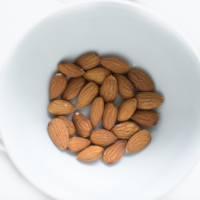Managing allergenic/gluten cross-contamination is a top priority for food processors. In highly automated facilities, the control system can assist with product scheduling to mitigate these risks, coupled with robust monitoring and enforcement to help prevent circumstances where such risks tend to lurk.
Complicating any scheduling process is the requirement of sequencing certain product types in specific orders. For example, if you are making vanilla pudding, it is often permissible to follow that product run with chocolate pudding. Reverse the production order, and residual traces of chocolate color could ruin your vanilla product. Of larger concern is the potential carry-over of allergenic/gluten ingredients from one product into another under similar circumstances.
An automation system manages allergen/gluten cross-contamination control by coordinating the operations of the automated cleaning equipment with the automated production equipment. It does so in a predefined prescribed manner to insure safe operations at all times. Let’s take a closer look at how this works in practice, starting with the cleaning equipment.
Larger-scale automated cleaning operations are typically accomplished with clean in place (CIP) systems. These systems are comprised of one or more tanks that circulate cleaning solutions through the assembled process equipment. A CIP system is usually programmed with a variety of cycle types such as rinse only, full wash and sanitize. Each cycle is comprised of a series of steps for things like filling the system, adding detergent, circulation, rinsing and draining. There is generally some sort of recording device to provide independent verification that proper temperature, flow rate and cleaning solution strengths are met.
The production equipment of interest starts with the product makeup area. This is usually composed of ingredient batching or blending equipment which combines raw ingredients in an automated manner to make a finished product. There is usually a variety of metering, weighing, heating, cooling and mixing operations involved in this process. Once the product makeup is complete, it is usually transferred to some sort of finished product holding area where it is in turn transferred to filling/packaging equipment.
An allergen/gluten matrix editor brings these production and cleaning operational areas together. All product types are listed in both rows and columns. One group defines the previous product run, and the other defines the next run. The matrix point where each product type meets defines the requirements between these runs. These requirements can range from none at all--where one product can freely follow the other--to a short rinse required between product runs, full-scale long wash requirements or anything in between.
These profiles are used to determine allowable production scheduling and permissible ad hoc production runs. When a production run is initiated, every piece of applicable process equipment is checked to insure the matrix requirements are met, or the run is disallowed. This production run configuration data are typically maintained and controlled by quality assurance, and cannot be overridden by operations staff.
In large-scale automated processes, this approach is commonly deployed to insure the safe and effective operation of these systems.
David McCarthy is the president and CEO of TriCore, Inc.



